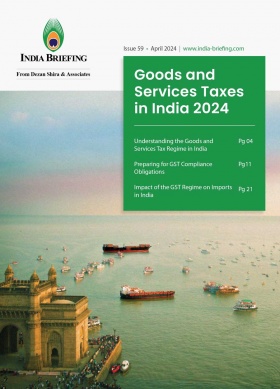India’s Tax Authority Retains 1% and 3% Tolerance Range for Transfer Pricing for AY 2024-25
India’s income tax authority, CBDT, has announced the tolerance range for variations between the arm’s length price and the transfer pricing for both international and specified domestic transactions for Assessment Year 2024-25.
The Central Board of Direct Taxes (CBDT), a policymaking body that functions under the Department of Revenue, Ministry of Finance, has set a new tolerance range for transfer pricing for the Assessment Year (AY) 2024-25, as outlined in notification no. 116/2024 dated October 18, 2024. This tolerance range aims to give taxpayers greater certainty and reduce concerns about transfer pricing risks.
A defined tolerance range in transfer pricing offers a balance between compliance flexibility for businesses and administrative efficiency for tax authorities, which fosters a more stable and cooperative tax environment.
Understanding the transfer pricing threshold notified by the CBDT for AY25
As per Rule 10CA(7) of the Income-tax Rules, 1962, if the difference between the arm’s length price and the actual price of an international or specified domestic transaction is within the specified tolerance range, it is considered to be at arm’s length. The newly notified tolerance ranges are as follows:
- 1 percent for transactions classified as “wholesale trading.”
- 3 percent for all other transactions.
“Wholesale trading” refers to transactions in which:
- The purchase cost of finished goods is at least 80 percent of the total cost related to trading activities.
- The average monthly closing inventory is 10 percent or less of sales.
CBDT typically reviews and notifies the tolerance range annually, specifying the percentage range for each Assessment Year. Often, the range remains consistent over multiple years unless there are compelling reasons to adjust it. However, if the economic conditions or industry practices change significantly, CBDT may modify the range to reflect those shifts.
Determining factors for the tolerance range
- Economic conditions: The tolerance range may be adjusted based on broader economic factors, such as inflation, exchange rates, and economic stability. If market volatility affects transaction costs, the tolerance range might be adjusted to accommodate these shifts.
- Industry standards: Different industries have unique cost structures, inventory requirements, and price variations, influencing what is considered a reasonable range. CBDT sometimes sets different ranges for sectors like wholesale trading, where smaller margins are common.
- Compliance and administrative costs: The tax authorities aim to strike a balance between ensuring fair market pricing and not overburdening companies or the tax administration with excessive audits. Lower tolerance ranges might result in more scrutiny, so CBDT considers the administrative feasibility of enforcing a specific range.
- Global best practices: CBDT may align with international transfer pricing norms and guidelines to stay competitive and maintain cross-border tax agreements.
Tax experts in India believe that the retention of the tolerance range at 1 percent and 3 percent will support stability and predictability in transfer pricing, helping businesses manage compliance more effectively while also allowing the tax authorities to focus on higher-risk areas.
Significance of adjusting tolerance range of transfer pricing
Adjusting the tolerance range for transfer pricing has significant implications for both businesses and tax authorities:
- Reduced compliance risks for businesses
- Certainty and predictability: A clear tolerance range offers taxpayers certainty about what will be accepted as an arm’s length price (the fair market value for transactions between related entities). It allows them to structure transactions within acceptable limits, reducing the likelihood of disputes.
- Cost savings: Lower audit risks mean fewer resources spent on defending pricing practices, as transactions within the tolerance range are unlikely to trigger additional tax scrutiny.
- Ease of planning: When businesses know the tolerance range, they can make informed pricing decisions for intra-group transactions and better allocate resources for transfer pricing compliance.
- Reduced burden on tax authorities
- Efficient auditing: Setting a tolerance range streamlines transfer pricing audits, allowing tax authorities to focus on higher-risk transactions. It minimizes the need for detailed examination of every transaction, focusing instead on those that deviate significantly from the arm’s length price.
- Lower administrative costs: Tax authorities can allocate their resources more efficiently, avoiding lengthy investigations for minor price discrepancies within the range.
- Improved cross-border investment climate
- Enhanced confidence for investors: A well-defined and stable tolerance range makes a jurisdiction more attractive to multinational corporations. Reduced uncertainty around transfer pricing can encourage foreign direct investment, as it signals that tax policies are predictable and fair.
- Alignment with global standards: Setting a tolerance range aligns with international transfer pricing norms and reflects best practices, making the country’s tax system more transparent and comparable with those of other jurisdictions.
- Reduced litigation and disputes
- Fewer legal disputes: A clear tolerance range lowers the chances of disputes between taxpayers and tax authorities, as both parties have a predefined boundary for acceptable pricing.
- Efficient dispute resolution: In cases where disputes do arise, the tolerance range provides a framework for quicker resolutions, as it establishes a reference point for acceptable pricing.
About Us
India Briefing is one of five regional publications under the Asia Briefing brand. It is supported by Dezan Shira & Associates, a pan-Asia, multi-disciplinary professional services firm that assists foreign investors throughout Asia, including through offices in Delhi, Mumbai, and Bengaluru in India. Readers may write to india@dezshira.com for support on doing business in India. For a complimentary subscription to India Briefing’s content products, please click here.
Dezan Shira & Associates also maintains offices or has alliance partners assisting foreign investors in China, Hong Kong SAR, Dubai (UAE), Indonesia, Singapore, Vietnam, Philippines, Malaysia, Thailand, Bangladesh, Italy, Germany, the United States, and Australia.
- Previous Article India-UAE 2024 BIT: Striking a Balance Between Investment and Autonomy
- Next Article India’s CBDT Extends Corporate Tax Filing Deadline for AY 2024-25








